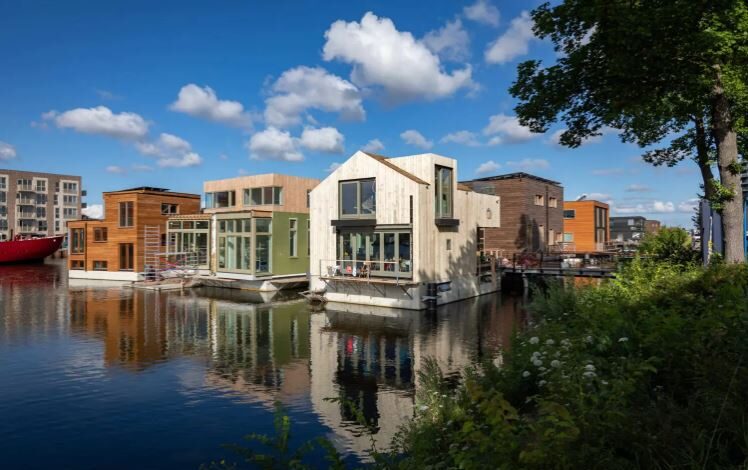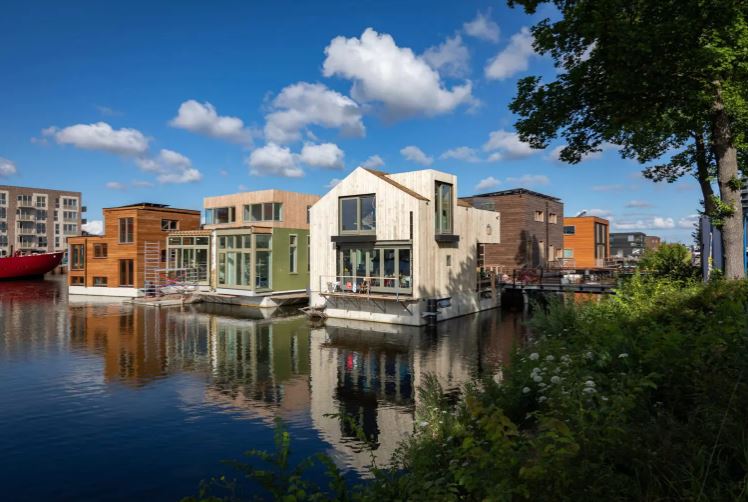Schoonschip: the floating sustainable district of Amsterdam self-sufficient in everything

It took 10 years to build the sustainable district of Schoonschip
(sustainabilityenvironment.com) – It took 10 years but in the end the sustainable district among the best in Europe made in self-build is finally a reality. And as if it were not enough that it is able to self-produce all the energy necessary for operation, which is made in green building and that follows throughout the principle of circular economy, the district of Amsterdam is also floating.
The initial spark was born in 2010 by Marjan de Blok who decided to involve a real community of people to create an environmentally sustainable floating district throughout.
From that first meeting was born the Schoonschip Village, which today hosts about 100 residents of 46 families on 30 houseboats. The project was then developed by Space&Matter who followed the residents in all phases of construction.
Zero energy, recycling, respect and sharing
As pointed out by those who gave life to the dream and who now inhabit Schoonschip the process was far from easy. The complexities of finding a common agreement, of identifying sustainable solutions compatible with current legislation, find companies and professionals willing to get involved in experimenting with green solutions already known, but in a very particular context. These obstacles have culturally enriched the project transforming the most sustainable district in Europe into a reference model, a catalogue of innovative Open source solutions available to all. The Greenprint 3D model is of great impact and easy to understand and allows residents to know in real time the consumption of each appliance, the energy produced, the operation of heat pumps or solar panels, the energy stored. Everything that can facilitate the best management of the system.
Read also The experience of Covivio: the new face of real estate with people at the heart of evolution
Adapt to change

The Floating Village built on the Johan van Hasseltkanaal Canal is built only with biocomaptible certified materials. The high insulation reduces the need for heating and cooling.
Heat pumps provide heating by recovering heat from the canal water.
Thanks to 516 photovoltaic panels and 60 solar thermal panels the energy used is only renewable and stored in lithium-ion batteries. Supply and demand are governed by a smart grid created solely for this community, the Smart Community Platform (SCP) and then connected to the local energy supplier.
Recycling is the keyword of all processes. From the recovery of rainwater to the recycling of grey water, to completely eliminate food waste thanks to family gardens and hanging gardens on the roofs. In the future plans of the floating district of Schoonschip there is also a partnership with the company Waternet, to recover waste water in a biodigester and turn them into energy.
Sociality and sharing are obviously a very important aspect to ensure the success of this project. Electric vehicles, cars, the bikes are all sharing also they are loaded thanks to clean energy.
The future goals
The community’s ambitions now include the preservation of the channel’s biodiversity, fostering its growth through floating gardens, bee hives, and a system of growing and buying local organic food. Schoonschip is also trying to transform itself into a shared mobility hub by making its ecological vehicles available to other local residents.





